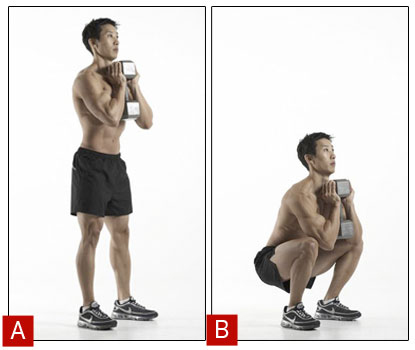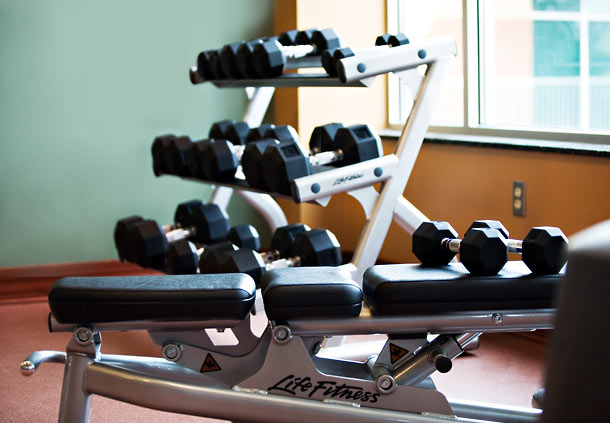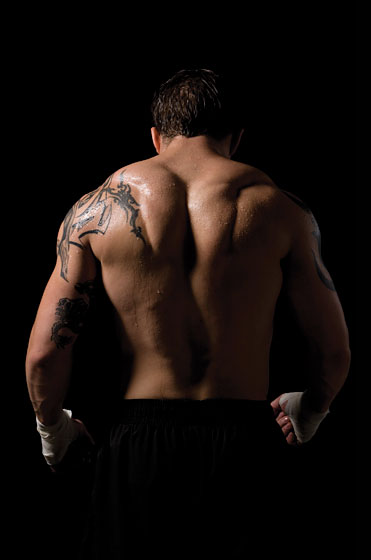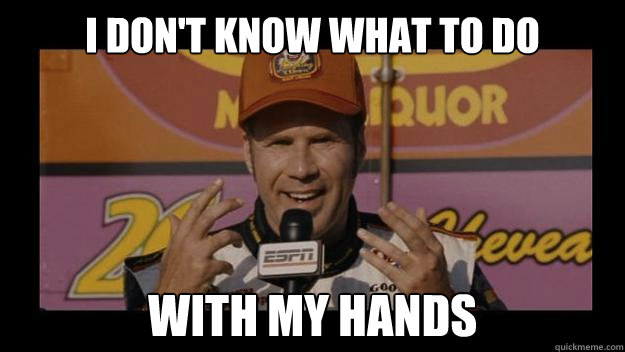Miscellaneous Musings 1/27/12
1. One of the best parts of working at SAPT is the privilege of training a BROAD spectrum of people each and every day. On any given day I may get to work with pro baseball and soccer players, high school athletes (our predominant group of clientele), Jewish school teachers, hobbits from the Shire, 12-year-olds learning to play soccer for the first time, you name it. I point this out because oftentimes parents are surprised when they walk in for the first time and see adults training right alongside high schoolers. "Oh, you work with adults, too??"
Yes, we do. Age is just a number, really! For example, here is Big Joe (*in his 40's, mind you), smashing 405lbs for a trap bar deadlift PR. We recently helped Joe prepare for the East Coast "Tough Mudder", a brutal 11-mile race brimming with unforgiving obstacles. He placed a whopping top 5% out of a few thousand people.
Needless to say, we're looking forward to seeing how he does in 2012!
On a related note, we also work with multiple people that have injuries and/or are coming out of surgery.
Case in point: below is Conrad, just coming out of knee replacement surgery. He was practically banging on our doors as soon as he could post-operation, and we're thrilled to be helping him back on his feet in the iron realm. Already he's back on the trap bar, ingraining proper technique and slowly but surely regaining strength back in his leg.
He's been getting AFTER IT, and just upped his number of training sessions to 3x/week with us. His doctor/physical therapists told him he had one of the fastest recoveries they'd ever seen for his age, which goes to show how far some dedication will go. Again: age is just a number!
This being said, don't let the fact that you're injured, or past your "golden years," keep you from getting after it!
2. Sam Giguiere (NFL wide receiver) training. This video has been out for a little while now, but for those who haven't seen it, it's awesome. I love the way elite athletes combine maximal power with simultaneous relaxation of movement.
 3. This weekend I head out to celebrate my sister's wedding. Hence this quick n' random post so that I can take care of everything before the coaching hours begin. I'll then immediately head out from SAPT to the rehearsal, rehearsal dinner, and follow up Saturday's ceremony by partying it up like it's 2012. Oh....wait.....it is 2012. Ohh how I crack myself up sometimes.
3. This weekend I head out to celebrate my sister's wedding. Hence this quick n' random post so that I can take care of everything before the coaching hours begin. I'll then immediately head out from SAPT to the rehearsal, rehearsal dinner, and follow up Saturday's ceremony by partying it up like it's 2012. Oh....wait.....it is 2012. Ohh how I crack myself up sometimes.
(Cue personal shout-out to sister:) Jenn, I'm crazy excited for you!!! You can bet I'll be busting out some bubble gum dances and robots for you on the dance floor.
And your husband-to-be is totally going to have to arm wrestle me to prove his honor before he says "I do." Hah! I kid, I kid.
A HUGE congratulations to you both!
4. This is awesome. See the video below for Ray Lewis's speech to the Ravens after they lost to the Patriots in the AFC Championship Game.
I personally feel many take sports wayy more seriously than they should, and Ray leads by example here, despite the fact that he was on the losing side (especially immediately post-game, when emotions would be the highest). I'm not a Ravens fan, but this is great.
That's all for now. Have a great weekend everyone.
*Joe, please don't hurt me for giving your age. I was using it as a compliment. Really!
It All Starts With the Grip
I decided to give my on camera prowess a go today and talk about an awesome squat grip. It’s a thumbless, pinkyless grip that I’ve seen great results with. I learned this from a strength coach that I used to work under who currently trains at Tampa Barbell. I suggest giving this a shot if your shoulder and t-spine mobility is as bad as a T-Rex. Lay off me about my on camera ridiculousness; I felt like Ricky Bobby, wasn’t quite sure what to do with my hands. 
[vsw id="EsoWv6qwZ7c&feature=autoplay&list=UUKSYQ75Buogznl62rdbks2Q&lf=plcp&playnext=1" source="youtube" width="425" height="344" autoplay="no"]
On another note, I am preparing for my first geared (single-ply) meet in April. In all my other competitions I have competed raw and really had no idea how different lifting in gear would be. I got my bench shirt in the mail the other day and decided to try it out. Needless to say, it was rough. And after trying it out I don’t want to ever hear people say using gear is easier, it’s not. Out of all the things I’ve done in the weight room it was by far the hardest and most taxing. My bench shirt repeated yelled at me, “I PWN NOOBS”. Check out the video of my epic fail; couldn’t even get it to my chest.
[vsw id="0TQ5LNXlvMM&list=UUKSYQ75Buogznl62rdbks2Q&index=1&feature=plcp" source="youtube" width="425" height="344" autoplay="no"]
SAPT Exercise of the Week: Goblet Squat to Stepback Lunge
Here's a cool hybrid exercise that will work your lower body and smoke your core as well.
Goblet Squat to Stepback Lunge
How to do it: Pretty self-explanatory. Grab one or two kettlebells and hold them in the goblet or "racked" position as shown in the video. If you don't have kettlebells, hold one dumbbell at your chest as shown in the picture below.
One squat followed by a stepback lunge with each leg equals one rep. Perform 5-12 reps, depending on your goals.
 Why I like it: I find this exercise to be useful for a few scenarios:
Why I like it: I find this exercise to be useful for a few scenarios:
1) Travel. It's no surprise to most of you reading that hotels aren't the best-equipped when it comes to their "fitness rooms." The first thing you'll notice is the lack of a squat rack (which would cost less than the myriad machines they have, along with providing countless more uses, but I digress). You'll then quickly notice a bunch of treadmills, machines, and, if you're lucky, a dumbbell rack.
 However, more often than not, the dumbbells stop at 50lbs. This is all well and good....I get why they do that. Nonetheless, sometimes those who are a bit stronger run out of ideas with what to do with sub-55lb dumbbells besides doing thirty reps of everything. Since the goblet squat to stepback lunge demands more from you than performing a squat (or stepback lunge) on its own, you can get more out of the lighter dumbbells. Also, with the weight being held at your chest, your entire midsection is going to have work like crazy to keep yourself upright.
However, more often than not, the dumbbells stop at 50lbs. This is all well and good....I get why they do that. Nonetheless, sometimes those who are a bit stronger run out of ideas with what to do with sub-55lb dumbbells besides doing thirty reps of everything. Since the goblet squat to stepback lunge demands more from you than performing a squat (or stepback lunge) on its own, you can get more out of the lighter dumbbells. Also, with the weight being held at your chest, your entire midsection is going to have work like crazy to keep yourself upright.
Another note here would be if you're in a normal gym with only a few minutes to train and the squat rack is being hogged by a dude doing shrugs for an hour.
2. To use on an "off" day. The more I train, the more I tangibly recognize the truth of Dan Gable's sage advice: "If something is important, do it every day."
Wanna know something that's important? Squatting! Toss in a few of these babies on your off days to get some bloodflow going, "unglue" yourself after a long day at the office, and ingrain some proper motor patterns.
Not to mention, the stepback lunge is the most "knee friendly" of all the lunge variations, on top of the fact that it doesn't typically invoke too much post-workout soreness due to lessened deceleration demands (as you'd experience during a forward lunge or walking lunge).
If you are using these on an off day, go light with the weight selection. No need to be a superhero, big guy.
3. Accessory Work. We've also programmed these for people as part of their main training day, for a few reasons. Maybe we're trying to give their CNS a break from the barbell (ex. if they're overwhelmed with in-season demands or are doing a lot of extra work outside SAPT with the military, their sports teams, etc.). Or, sometimes, we're just trying to deload their spine a bit and take some time away from barbell squatting/lunging. Or, maybe we just want to make them hate life.
4. Conditioning Work. As noted above, these things have the potential to make you hate life. Toss them in from time to time to develop that good ol' work capacity.
**Addendum: This also makes a great variation for sandbag work. See the video below in which me and a few buddies of mine did these for part of an outdoor workout.
When You Can’t Sleep
So, you’re not sleeping? Ahh – neither am I.
Here’s a list of things to keep your busy mind occupied and focused on something positive instead of dwelling on the issues that are probably keeping you up in the first place:
- Eat a peanut butter and jelly sandwich. Why not? Who cares that it’s 2AM? They’re delicious and will probably make you feel a little bit better about being awake.

- Take the bull by the horns: address whatever is keeping you from falling back to sleep. Returning emails, addressing little projects, addressing little parts of big projects, etc. Can’t hurt, right?
- Listen to music.
- Turn on SportsCenter. It’s sports, it’s on 24-hours a day, it’s usually pretty positive and inspiring.
- Do something enjoyable/out of the ordinary.
Here’s my early morning play-by-play after Arabella woke up at 1:17AM (you start remembering the exact time after about the 300th occasion you’ve been roused by crying in the dead of night):
- Lay awake in bed for approximately 60-minutes mulling over small, but important and irritating, “issues.” Eventually, I officially acknowledged I’m not going back to sleep.
- Go downstairs and make a peanut butter and jelly sandwich (see #1 above). It was delicious.
- Return a few emails.
- Fill out SAPT product survey: I filled out a review on one of SAPT’s excellent products (if you’re reading between the lines, yes, that means I buy them, too… at full price). They actually are excellent and I actually enjoyed pouring some positivity out in a way, which for me is very non-traditional.
- Rediscover my love for Britney Spears. I'm totally serious right now.
- Make adjustments to my program for women’s basketball (Mason).
- Realize I can do a blog post on not sleeping – begin that.
- Fill out testing roster for women’s soccer (Mason) and go over testing protocol and setup one more time to ensure things go smoothly in the morning.
- Finalize this blog post while watching highlights of Pro Bowl players on SportsCenter.
Seriously though, here are some Actual Recommendations for Improving Sleep Patterns:
- Exercise daily: this helps reduce stress and expend the extra energy that may be stored up.

- Eat sensibly: throughout the day and before going to bed. It’s best to steer clear of large, dense meals right before trying to sleep.
- Set yourself up for some relaxing wind-down time: take a shower, drink some water, and get into bed with a good book (again, something relaxing).
- Allot 7-9 hours for uninterrupted sleep.
- Avoid allowing young, fitful sleepers occupancy near your bedroom. I’m hoping to surmount this problem in about 5 years.
Good LUCK!
Excellent Strategy for Upper Back Development
 I really don't think there's a such thing as "too much upper back work." In fact, I'd go so far to say that undergoing a training plan (be it athletic performance training, running, bodybuilding, etc.) without paying special heed to the portion of your torso that you don't see in the mirror is akin to constructing a house on a foundation of sand.
Keeping it brief, here's a simple, truncated list of what upper back work can do for you:
I really don't think there's a such thing as "too much upper back work." In fact, I'd go so far to say that undergoing a training plan (be it athletic performance training, running, bodybuilding, etc.) without paying special heed to the portion of your torso that you don't see in the mirror is akin to constructing a house on a foundation of sand.
Keeping it brief, here's a simple, truncated list of what upper back work can do for you:
- Improve posture
- Augment your "big lift" training (upper back weakness is often a limiting factor in how much you can deadlift, squat/front squat, and bench press)
- Ward off shoulder issues
- Offset all the slouching we do on a daily basis
And, perhaps what most of the majority of the crowd cares about: Enhancing one's aesthetic. For the ladies in the crowd, nothing exudes more confidence than standing "tall" with the shoulders pulled back. For the men the crowd - with some added assistance from farmers carries - you can at least come close to emulating Tommy Conlon's trap/upper back development which totally PWNED in the movie Warrior (see picture on the left).
Yeah, exactly.
Alright, let's get to it. Here's an awesome strategy to give your upper back some much-needed attention:
Pair a bilateral 'pull' with a unilateral 'push,' and double the number of sets for the pulling exercise.
As soon as I heard this strategy from Eric Cressey I knew it was brilliant, and, upon implementing it in my own training, I wasn't disappointed.
What does it look like?
Pick a bilateral, horizontal pulling exercise (chest-supported row, barbell row, TRX row, cable row, etc.) and pair it with a unilateral pushing exercise (single-arm dumbbell press, single-arm overhead press, single-arm pushup, etc.). I recommend putting this pairing first during an upper body day, so the first two exercises would look something like this:
A1. Seated Cable Row, Pronated Grip
A2. SA DB Bench Press, Neutral Grip
HOWEVER, here's the kicker.....set up the set-rep scheme something like this:
A1. Seated Cable Row, Pronated Grip: 6x8 A2. SA DB Bench Press, Neutral Grip: 3x6/side
THEN, sequence the movements as follows: Seated Row --> SA Bench (left side) --> Seated Row --> SA Bench (right side) --> Seated Row --> SA Bench (left side) --> etc. etc. etc. clap yo' hands, fist pump x1,000.
I've been using this with enormous success for the past eight weeks or so in my own training. Why is this so awesome?
1. It's an easy way to keep your pulling vs. pushing volume in check. Most All of us tend to favor pressing over pulling, so setting up the sets/reps like this forces us to remain honest.
2. It's a fantastic way of getting in a lot of good horizontal pulling without feeling too fatigued. Since you essentially take a "mini break" between each set of rows to do your pressing exercise, it activates the antagonists of the back musculature, leaving you feeling a bit more rested by the time you get back to the row.
3. You're still providing plenty stimuli for the pressing muscles via the single-arm variation. Not to mention, the single-arm pressing exercise is an excellent method of receiving the added benefit of core stability training. Your have to brace your abs and glutes HARD to keep your torso from shifting side to side. (Note: If you're wondering why I have my arm out to the side like an idiot in the video, it's 'cuz I'm trying to counterbalance. Don't knock it till you try it....geeze....)
4. It just flows well. You can knock out this pairing in relatively little time while still getting a lot of work accomplished.
To put things in perspective, let's say you just do this during one of your upper body days for two, 4-week training blocks. Assuming you keep all your other pull/push pairings of equal volume (which I wouldn't...but let's just go with it...), that gives you an extra 240 reps of pulling over a mere 8-week period! Just by making that simple adjustment in your programming.
Even if you go with a "6x6" set-rep scheme for the bilateral pull, that still gives you 144 more repetitions of pulling over pushing, and we're talking only two months out of the year.
As long as you keep up with your deadlifts and other cornerstone lifts for the backside, imagine what will happen if you cycled this in and out of your training year round?
Tactical Frog Mobilization
Here's a quick video on an excellent hip mobility drill I like to use to open up the hips before training.
Have a frogtastic weekend everyone.









